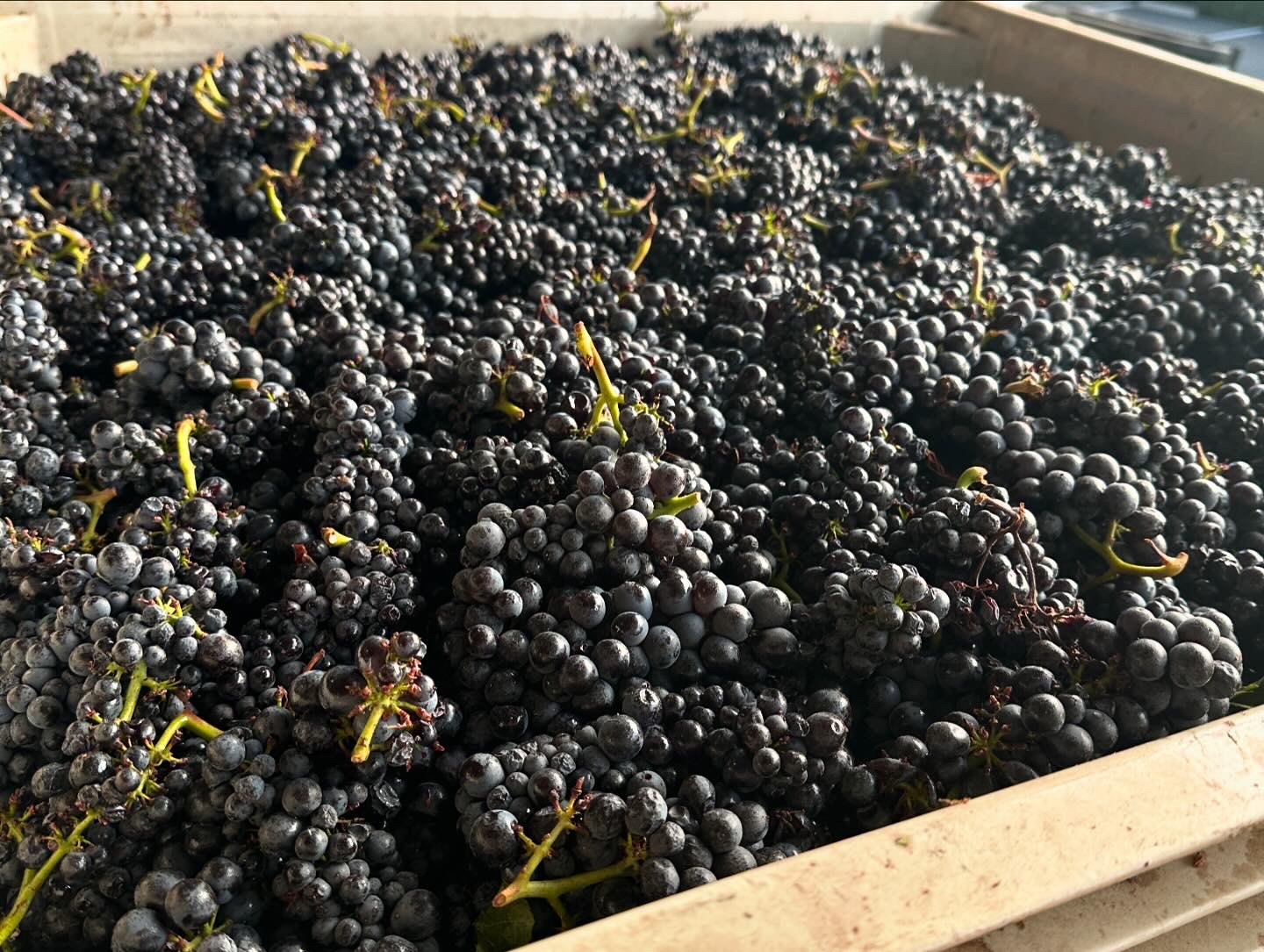Your cart is currently empty!

As I write this, we are very near the middle of harvest. There have been enough grapes harvested to give a decent idea of the quantity and quality of wine that will be produced as well as some preliminary thoughts about the style of the vintage. But the final chapters of Harvest 2024 are still to be written, and as you all know, how the movie ends often sticks with you more than how it begins. This week’s weather, the week of September 15, 2024, has seen two troughs passing through the area from the Pacific Northwest, leading to cooler temperatures and a brief break in the harried pace of harvest, thus allowing vintners and growers a little time to catch up – and to answer my questions. With this respite in mind, I took the opportunity to reach out to a variety of vineyard and winery people for a “halftime report” on the vintage.
Harvest started, as always, with Sparkling Wine. This harvest started in August and occurred during a warmer period which led to a condensed harvest. Nicole Hitchcock, Estate Director at J Winery, described the vintage saying, “The 2024 J sparkling harvest flew by in a record 3 weeks. Across the board, the fruit was clean, uniform, and of superb quality. Flavor development aligned nicely with grape maturation, and acidity levels are particularly zippy- especially in Chardonnay.” This theme of acidity is something we will see in later comments on still wines.
Still wine started with Pinot Noir and Chardonnay, and one point that echoes throughout the comments given to me is that yields on the Sonoma Coast are higher than normal. The further east you move into the Russian River Valley, the more “normal” the yields become. This is especially true for Pinot Noir. Jim Pratt, owner of Cornerstone Vineyard Management, who oversees vineyards throughout the Sonoma Coast and Russian River Valley points out that “Both whites and reds are down in cluster count (the number of clusters on each vine), but whites did not compensate in cluster or berry size. Reds have slightly larger than normal cluster and berry size, but this year have much more uniform berry size.” This is echoed by Sam Lando of Lando Wines who notes that, “high quality Pinot noir (from our designated acreage/blocks) in the Russian River Valley & particularly Sonoma Coast seems to be up in tonnage, about 10% from our yield estimates due to heavier cluster weights.” The driving factors in these heavier weights seems to be the good winter rainfall and the ideal weather during flowering and set, which meant that every berry set on each cluster. Mike Sullivan of Benovia Winery notes that, “The healthy winter rains helped saturate the soil and gave the vines a solid start when they came out of dormancy, with enough soil moisture for happy vines and healthy canopies.” And even though there are somewhat fewer clusters per vine, the clusters that remain are fuller and more juicy than normal. John Bucher, of Bucher Wines, notes that “we are having to prepare an extra barrel for each lot that we press off as the amount of juice per ton is a bit higher than we normally expect.”
Sauvignon Blanc, the one grape type in very high demand, seems to be all over the place in terms of yield. Randy Ullom of Kendall-Jackson reports that his Sauvignon Blanc production is up a bit more than anticipated and that is echoed by Richie Allen of Rombauer who sources it from throughout Napa and Sonoma Counties. But Morgain-Twain Peterson of Bedrock Wine Company reports that his Sauvignon Blanc has been “generally light which is deeply ironic since that is the one variety anyone really wants this year.” Morgan also mentions this variability in yields with Zinfandel. “Even in a relatively small geographic spread like Forestville to Piner-Olivet to Wood Road in RRV we saw two vineyards at near historically light yields and then two others which are more than healthy.”
The Bordeaux grapes (Cabernet Sauvignon, Merlot, etc.) are really just starting to be picked, but Megan Gunderson of HALL Wines reports that her first few picks in Napa are “on target.” Early reports on Sonoma County Cabernet seem to show a slightly smaller than normal crop. Jesse Katz of Aperture Cellars mentions this as a possible cause, “Our most extreme heat came in June, thankfully post fruit set, but pre veraison. We did see some heat damage that was address at our first thinning pass, but it also helped put some needed stress on the vine to help shrink berry size, in particular in Bordeaux Reds.”
Of course, quantity doesn’t necessarily correspond with quality, and what most consumers want to know is “How good are the wines going to be?” At this early stage, determining the difference between very good and great is difficult, but everyone seems quite happy at the moment. Winemaker Morét Brealynn Chavez of Moret-Brealynn Wines says, “”This vintage has been a lot of fun to work with because the shifts in weather fronts have really set the vines up for success. The fruit is vibrant and juicy, and you can feel the potential in the wines we’re crafting.”
Two factors are mentioned most often in the style of the wines. First, somewhat higher acids than normal – a bit surprising given the somewhat warm (but not hot) growing season. Acid levels are an important part in the balance of a wine and warmer years in California tend to be acid deficient – not the case with 2024. Bob Cabral of Bob Cabral Wines who works with Pinot Noir and Chardonnay primarily describes the vintage style by saying, “The quality is very good with higher acids, good skin & seed development, much like 2019 or 2016.” This seems to hold true for Cabernet with Jesse Katz describing it this way, “we are seeing incredible ripe flavors with still high acids.” The second factor that was mentioned by some was that sugars were running slightly ahead of flavors and that this week’s cooler weather has been a great help in bringing these into alignment. Megan Gunderson says, “I believe patience is key.”
James Hall of Patz & Hall Winery sums up 2024 well at halftime “2024 is such a polite, well-mannered vintage. Nice yields, great weather, dense powerful wines, easy fermentations, and a manageable steady harvest schedule. Smiles all around!”
